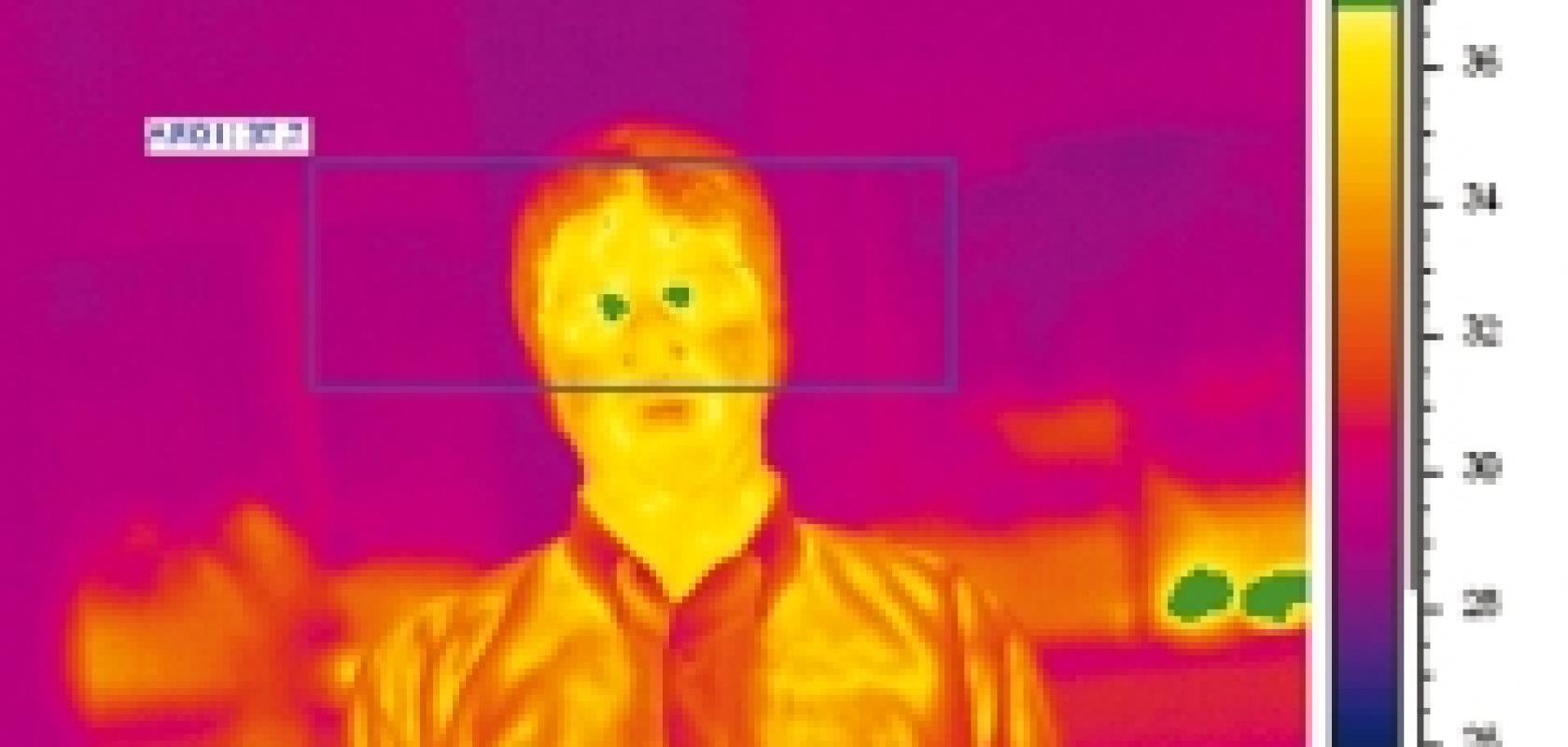Infrared camera technology is being used at airports and major transport hubs to scan travellers for signs of contamination with the H1N1 virus responsible for swine flu. An infrared camera is an effective tool to detect individuals with high body temperatures, suggesting infection with a viral disease. The technology was used in major airports in Asia with the outbreak of SARS and bird flu, as well as at Beijing International Airport before the 2008 Olympic Games.
Cameras from Flir, Armstrong Optical, and Xenics are playing a part in the detection of swine flu sufferers at several major international airports across the globe. The cameras produce infrared images of a person's face and detects whether the body temperature exceeds a certain value or not.
'The aim is to efficiently identify and differentiate individuals in good health from individuals with fever who might be contaminated with the swine flu. After that, further medical analyses within the public health care will determine whether it is swine flu or not,' said Arne Almerfors, vice president at Flir Thermography.
The infrared cameras from Flir are sensitive devices and measure temperature differences as small as 0.08ºC. Ideally the camera is set up at places with long queues such as passport or customs control. To achieve the correct temperature the camera should focus on the most reliable temperature spot on the body – the corner of the eyes.
Ian Johnstone, sales and marketing director of Armstrong Optical, commented: 'The IR236 [from Armstrong Optical] has, over many years, enabled immigration and security authorities across the globe to detect possible disease carriers.' The IR236 camera can operate in a fully automated, remote fashion and images from a built-in high-resolution visible camera aid in the identification and tracking of fever sufferers. Xenics' Raven, an uncooled microbolometer infrared camera, measures in real time differences in body temperature at an accuracy of up to 0.2C.
Infrared cameras can be used in any environment where large numbers of people are passing or staying, such as airports, train stations, the underground or building foyers. Thermoteknix Systems' Miricle FevIR Scan thermal imaging and temperature measurement system is also suited to high-volume screening of people. The camera can detect temperature differences to 0.05ºC and its high-resolution detector and lens options allow it to cover a wide or narrow field of view as required.


